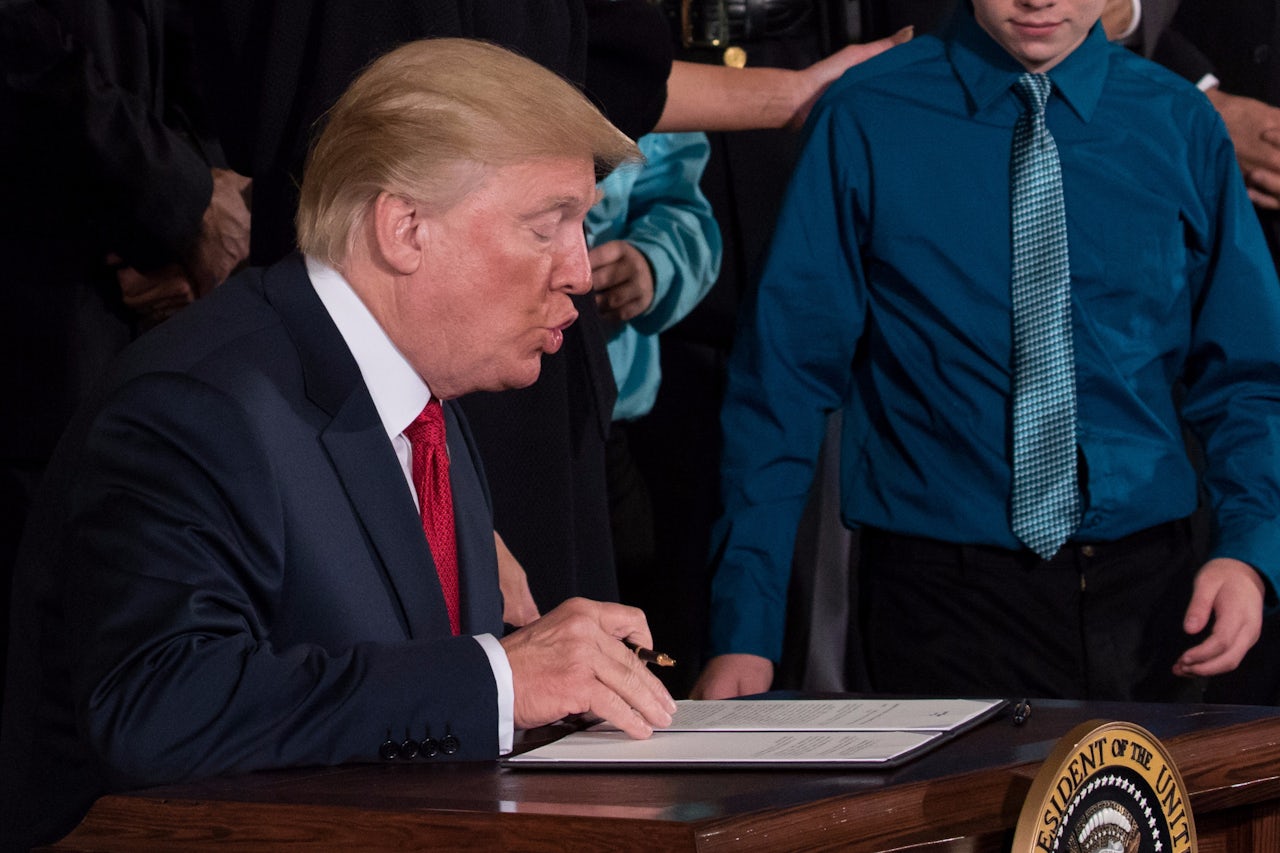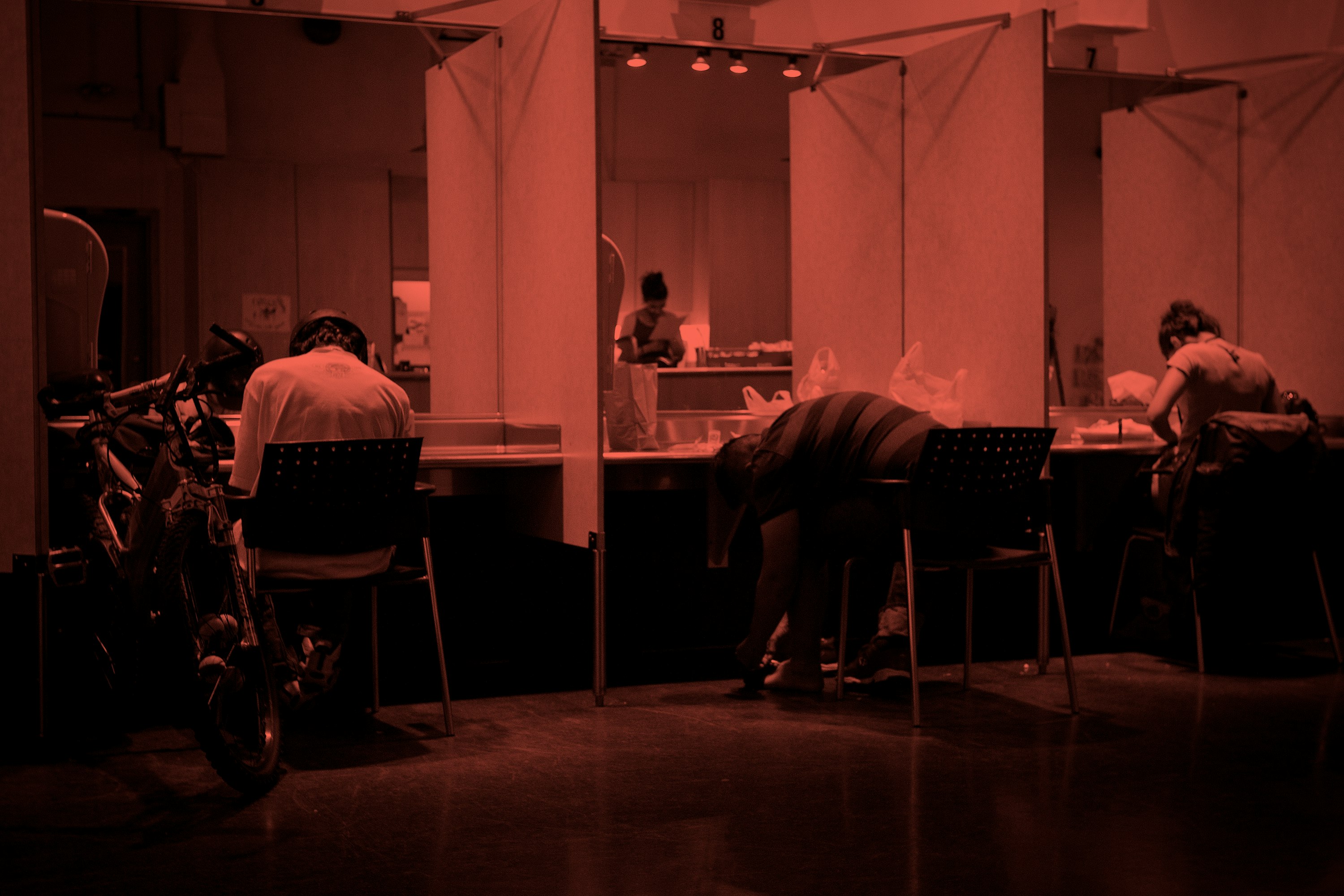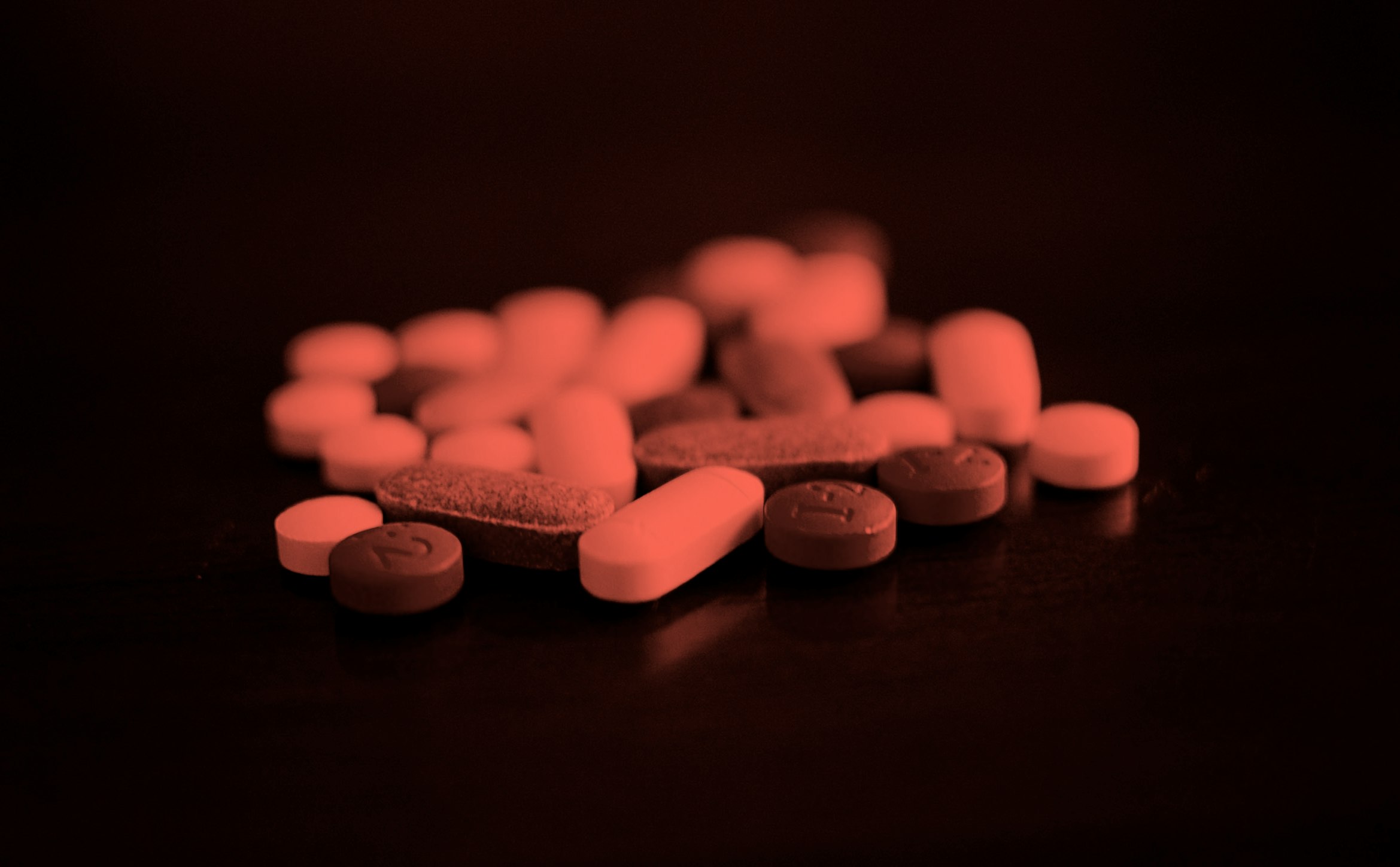Those of us who have friends or family struggling with addiction to opioids have known for quite some time that it’s a dire situation, so President Donald Trump’s recent declaration that the so-called opioid crisis is a “national health emergency” felt like a weak and delayed response. Despite public-health crisis designation, Trump won’t offer any additional funding to help deal with the epidemic, although The New York Times reports that the official classification will “allow for some grant money to be used to combat opioid abuse,” to hire specialists, and to “expand telemedicine services” — internet doctors — to rural areas that are lacking in physicians.
Even when he ordered the directive, the comments made by Trump, who has often compared the disease to the alcoholism that ultimately killed his brother Fred, show an alarming lack of understanding of what causes heroin addiction. “This was an idea that I had, where if we can teach young people not to take drugs,” Trump said, “it’s really, really easy not to take them.”
At best, Trump’s underestimation — of both the cost of combating the disease and the causes of it — will do nothing to attack the causes of the scourge; at worst, it could lead to law enforcement around the country taking creative license to over-criminalize drug users and low-level dealers. Not so coincidentally, the crisis has hit places like the Rust Belt and Appalachia the hardest; places that helped form the core of Trump’s coalition last November. Without serious investment into the economic and mental health infrastructure of impoverished communities, the root causes of addiction won’t be dealt with, and the eradication of opioid addiction will likely be followed by a spike in some other form of substance dependency.
Trump’s hollow words echo the “just say no” campaign of the 1980s, and the sentiment will likely work as well now as it did then. Many people become addicted the opioids not because they choose to take them, but because they’re prescribed them for dealing with physical pain that comes from recovering from surgery or a serious injury. Other people become addicted as a result of untreated mental health — “Over 40 percent of people who have an addiction also have another mental-health challenge,” New York City First Lady Chirlaine McCray noted in a recent op-ed — or the economic realities of living in places like a poor, underserved white county in West Virginia, or a poor, underserved, and over-policed black or Latinx neighborhood in cities across the country.
Without serious investment into the economic and mental health infrastructure of impoverished communities, the root causes of addiction won’t be dealt with.
Others, knowing the risks of addiction, forego pain medicine entirely and try to cope in other ways. Rusty Williams, a West Virginia activist who was diagnosed with testicular cancer in 2012, told me this summer that he refused pain medicine to help deal with the chemotherapy treatments and chose instead to self-medicate with marijuana. “I was adamant about not getting on pharmaceuticals,” he said. “I didn’t want to get through [cancer] and end up addicted like half our state is.” (Williams is now cancer-free, and was instrumental in getting West Virginia’s medical marijuana law passed earlier this year, and now serves on the state’s Medical Cannabis Advisory Board.)
Nationally, the opioid epidemic seems to be only getting worse with time. According to the National Institute for Drug Abuse and Health, there were 64,070 drug overdoses total last year, a rate that has doubled in a decade and jumped 22 percent from 2015, when there were 52,404 deaths. The biggest increase has come in a category that the Center for Disease Control and Prevention calls “synthetic opioids other than methadone,” which includes fentanyl, an opioid that��s been estimated to be up to 50 times more potent than heroin; in 2014, according to CDC statistics, these drugs were involved in 5,544 such deaths, and the next year, 9,580, a 72 percent increase. Last year, according to provisional CDC statistics, they were involved in 20,145 deaths –– a 110 percent increase in just one year.
Prescription drugs have also played a role in the crisis; as a Pulitzer-winning investigation by the Charleston (West Virginia) Gazette-Mail last year uncovered, over three quarters of a billion painkillers — oxycodone and hydrocodone, both semi-synthetic opioids — were shipped into West Virginia pharmacies between 2007 and 2012. In one tiny town in the southwestern part of the state near the Kentucky border, nearly nine million pain pills were shipped to a single pharmacy. “It starts with the doctor writing, the pharmacist filling and the wholesaler distributing,” one retired Charleston pharmacist told the Gazette-Mail. “The distributors knew what was going on. They just didn't care.”
The suffering of others have made the companies who make them an enormous amount of money. Although increased scrutiny on companies who manufacture pain relievers has caused the industry to take somewhat of a hit, Forbes calculated last year that the Sacklers, the family behind the company that manufactures Oxycontin, still make $700 million a year from their pharmaceutical businesses.
In one tiny town near the Kentucky border, nearly nine million pain pills were shipped to a single pharmacy.
The added scrutiny has also shown the depths that pharmaceutical executives will sink to in order to protect profits. Late last month, John Kapoor, the billionaire founder of pharmaceutical company Insys Therapeutics, was arrested on charges that he and other executives were bribing doctors to prescribe Subsys, the company’s fentanyl medication for cancer patients. The arrest came less than two months after Democratic Sen. Claire McCaskill of Missouri released findings of an investigation into Insys, and recommended prosecution for anyone involved in the attempt to “manipulate the prescription approval process.”
McCaskill’s investigation could be a foundation for forcing drug companies to own up to their complicity in fostering the epidemic. As for helping people who are already addicted, two things that would seem to help would be a focus on treatment for both addiction and mental health, as well as increased economic investment, particularly in communities where addiction is prevalent.
But not only is the president unwilling to offer additional funding with his proposal, he’s also actively trying to kill the programs that are already in place to help those addicted to opioids. “We still battle with funding, obviously,” Rebecca Crowder, the director of a treatment center in Huntington, West Virginia, told First Lady Melania Trump in October. “We haven’t gotten to that point where they recognize [her clinic] through Medicaid.” The president is still pushing Obamacare repeal, which would gut Medicaid; according to the Kaiser Family Foundation, a health policy think tank, about 30 percent of nonelderly adults with an opioid addiction were covered by Medicaid in 2015.
Trump is actively trying to kill the programs that are already in place to help those addicted to opioids.
With the announcement that this is a problem but no funding to go along with it, it’s likely that the “solution” will be the further criminalization of users. And it’s not like drug users aren’t already arrested at a high clip: out of an estimated 10.7 million arrests nationwide last year, according to FBI statistics, 1.6 million were for “drug abuse violations” — more than any other crime. (And that’s actually down from an estimated 1.9 million in 2006.)
Although former attorneys general Eric Holder and Loretta Lynch urged prosecutors to avoid mandatory minimum sentencing for low-level drug offenders, Jeff Sessions, their far-right successor in the Trump administration doesn’t agree. In May, Sessions ordered federal prosecutors to pursue the toughest possible sentencing, including mandatory minimums, calling the previous Obama Justice Department sentencing “inconsistent.” And the same month, The Washington Post reported, Sessions asked Congress to let him prosecute providers of medical marijuana, meaning that in places like West Virginia, a real solution to the state’s opioid crisis might be inhibited.
The fact is that despite Trump’s words, the regressive actions taken by his Justice Department and the inaction on his part to fund effective solutions to the opioid crisis show another story. Once again, Trump is making promises he can’t make good on — because he doesn’t have any conception of what the problem is caused by, or what the problem even is in the first place. And the people put at a disadvantage due to this lack of understanding and action won’t just be those lost in the throes of addiction, but those trying to get clean, their families, and their communities, dooming current and future generations to the horror of burying parents, children, and friends way too soon.




